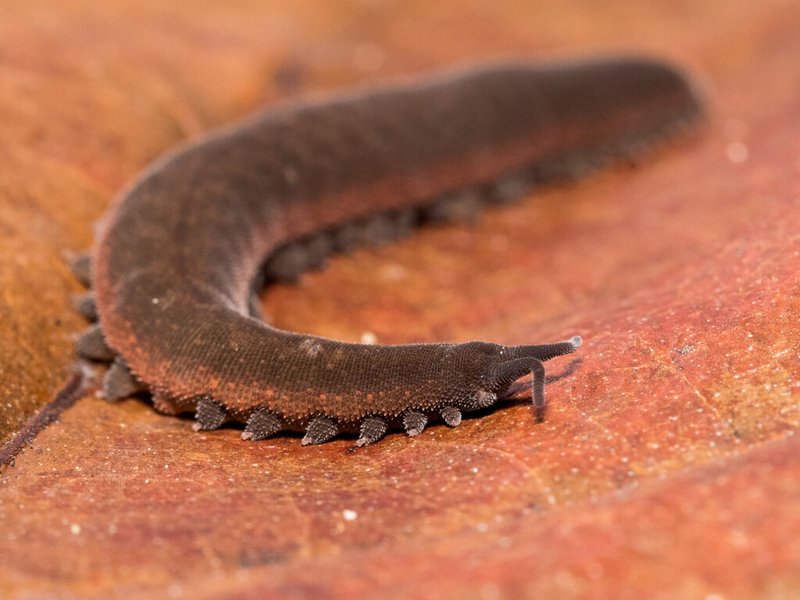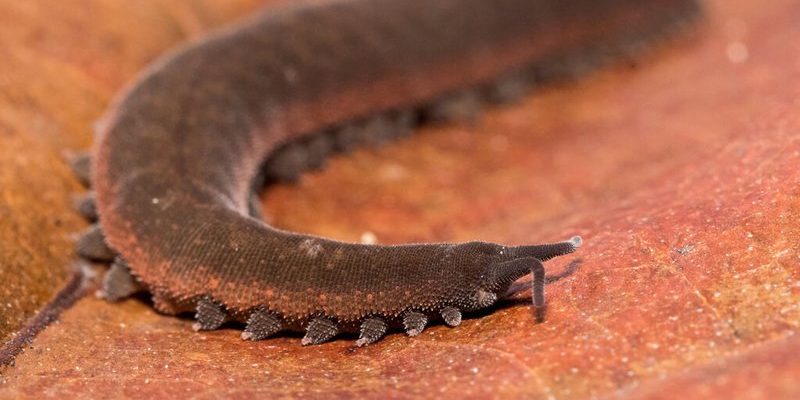
So, let’s dive into how scientists arrange and categorize these intriguing creatures. Think of it as a family tree where every branch tells a story about the velvet worm’s place in the animal kingdom. Each classification tells us something about their biology, behavior, and evolution. It’s a bit like understanding your relatives at a family reunion—you want to know who’s who and where they fit in, right?
What Exactly Are Velvet Worms?
First off, let’s clarify what velvet worms actually are. Velvet worms, or **onychophorans**, are soft-bodied, segmented invertebrates found in humid, tropical environments. They’re often mistaken for caterpillars due to their worm-like shape and slow movements. But don’t let their slow pace fool you! Velvet worms are quite remarkable in their hunting techniques. They have specialized slime glands that help them capture prey, like insects. When they spot their target, they shoot out a sticky slime to ensnare it—think of it as nature’s very own glue trap!
These creatures can grow anywhere from just a few centimeters to about 15 centimeters long, depending on the species and environmental conditions. Their bodies are covered in a delicate layer of hairs, giving them that distinctive velvety appearance. Plus, they have tiny legs that help them traverse through their leafy habitats. Honestly, if you saw one, you’d probably be curious but also a little unsure about what it is!
Why Classifying Velvet Worms Matters
You might wonder, “Why is it important to classify velvet worms?” Good question! The classification helps scientists understand evolutionary relationships among species. By knowing how velvet worms fit into the tree of life, researchers can uncover clues about how life on Earth has changed over millions of years. This classification can also aid in conservation efforts, especially as many species face habitat loss.
Understanding where velvet worms sit in the grand scheme of things can also help with studying their unique features. For example, their slime production and locomotion methods might have applications in biotechnology or medicine. So, it’s not just about naming them; it’s about unlocking secrets of biology that could benefit us all.
The Classification Hierarchy of Velvet Worms
In biological classification, scientists use a hierarchy to categorize living organisms. The velvet worm’s classification is as follows:
- Domain: Eukarya (organisms with complex cells)
- Kingdom: Animalia (multicellular organisms that typically can move)
- Phylum: Onychophora (the velvet worms themselves)
- Class: Udeonychophora
- Order: Peripatida
- Family: Various families depending on the species
Each level of this hierarchy tells us more about the velvet worm’s evolutionary lineage. By studying different families and species within this phylum, scientists can start to see patterns and make important connections regarding their adaptations and behaviors.
Physical Characteristics and Adaptations
Velvet worms possess several intriguing physical traits that help them thrive in their environments. For starters, their **body structure** is segmented, allowing for flexibility and movement through tight spaces. They have around 13 to 43 pairs of legs that are quite soft and aren’t used for running but rather for moving fluidly across leaf litter and wet surfaces.
Another fascinating characteristic is their **slime glands**. When threatened or when hunting, they can release a sticky, glue-like substance that immobilizes prey. Here’s the thing: this slime isn’t just for show. It plays a crucial role in their survival, allowing them to catch food and avoid predators. So, the next time you spot a velvet worm, remember that it’s not just a cute creature; it’s a predatory marvel of nature!
Behavior and Habitat of Velvet Worms
Velvet worms are typically nocturnal, which means they’re more active during the night when moisture levels are higher. They’re usually found in **tropical forest floors**, staying close to damp environments. This humidity is crucial for their survival since they breathe through their skin, which needs to stay moist.
During the day, you might find them hidden under logs or leaf litter, blending seamlessly into their surroundings. Their slow, deliberate movements are quite fascinating to watch. Honestly, if patience is a virtue, then velvet worms embody that spirit perfectly!
Evolutionary Relationships with Other Species
Here’s the interesting part: velvet worms are more closely related to insects and spiders than you might think. This family tie can seem surprising, given how different they appear at first. Scientists believe that the phylum Onychophora is a link between annelids (like earthworms) and arthropods (like crabs and insects). It’s like they’re bridging two worlds!
Studying these relationships helps researchers understand the evolutionary history of animal life on Earth. When scientists discover fossils of ancient velvet worms or their relatives, they can piece together a bigger picture of how these creatures have evolved over time. It’s like being a detective, uncovering clues from the past to understand the present.
Research and Discoveries Involving Velvet Worms
Researchers continually explore the unique features and biological properties of velvet worms. For instance, scientists are studying their slime for potential applications in medicine and materials sciences. The unique properties of the slime could inspire new adhesives or even treatments for wounds. Imagine a bandage that mimics the way velvet worms catch their prey!
Additionally, velvet worms are becoming important subjects in studies about biodiversity and conservation. As habitats change due to climate change, understanding these creatures could provide insights into ecosystem health. By keeping a pulse on velvet worm populations, scientists can gather vital information about the overall well-being of their environments.
Velvet worms might not be the most famous creatures in the animal kingdom, but they offer a glimpse into the amazing diversity of life on Earth. Classifying them within the phylum Onychophora is not just about naming; it’s a way to appreciate their unique biology and understand their role in the ecosystem.
From their soft, velvety bodies to their remarkable hunting techniques, these animals remind us how many wonders nature holds. Whether you’re a budding biologist or simply curious about the world around you, taking the time to learn about velvet worms can deepen your understanding of life’s intricacies. So next time someone asks you about velvet worms, you can confidently share their fascinating story!

